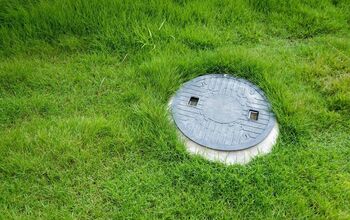Cesspools Vs. Septic Tanks: What Are The Major Differences?

The waste we produce on a daily basis can accumulate quickly. It must be managed properly or else homes can turn into mini landfills.
Most of the time, a centralized sewer system handles the waste coming from various households. But what if your home isn’t connected to that centralized sewer system? In that case, homeowners will have to turn to either cesspools or septic tanks to manage their waste.
Generally speaking, septic tanks are preferable to cesspools. Compared to cesspools, septic tanks are easier to maintain and encounter issues less frequently. Cesspools also often have to be relocated making them less convenient than septic tanks.
If your home isn’t connected to a sewer system, you need to use either cesspools or septic tanks for waste management. Find out which option makes more sense for your household by reading on.
Do You Need a Septic System Installation or Replacement?
Get free, zero-commitment quotes from pro contractors near you.

What Is a Cesspool?
Prior to going deep into the differences between cesspools and septic tanks, let’s first discuss them individually. Let’s start with the cesspools.
Cesspools, which are also known as cesspits, have been around for a very long time. In Europe, they’ve been in use since the 16th century. At the time, cesspools were used to effectively manage the amount of waste coming from growing cities.
The cesspools were widely seen as desirable alternatives to chamber pots. That was mainly because they didn’t have to be cleared out every day. A cesspool is basically a hollow chamber buried deep into the ground. They are normally made out of concrete, but you’ll also see some that are formed using bricks.
The sewage coming from your home enters the cesspool via an opening. Once inside, the sewage will eventually drain slowly through the perforated walls of the cesspool.
Because of the way they’re designed, cesspools often encounter clogging issues. The continuous flow of sewage causes sludge to accumulate along the lower part of the cesspool. With the openings along the lower part of the cesspool clogged, the rest of the container starts to fill up faster.
Even if the cesspool works as intended, it will still have to be moved at some point. The soil immediately surrounding the cesspool may soon be incapable of absorbing the waste coming from the container. At that point, the sewage will continuously rise to the top of the soil where anyone can see it easily.
What Is a Septic Tank?
Next up, we have the septic tanks. Just like the cesspools, septic tanks also have a pretty fascinating history.
Septic tanks came along a bit later than the cesspools. The first septic tank was built near the middle of the 19th century in Europe. It was engineered in the hopes that it could serve as a superior option to the already in-use cesspools.
The septic tank evidently proved a hit as it quickly made its way stateside not long after it was invented. Septic tanks have continually evolved and these days, you can find variants that feature multiple chambers.
The typical septic tank relies on special bacteria to help perform its job. It all starts when the wastewater from your home enters the tank. If there are solids present in that wastewater, they will float to the top of the tank. All those solids will be processed by the bacteria present in the tank. The bacteria will continue to work on those solids until they are converted into liquids.
Whichever particles in the wastewater cannot be processed by the bacteria are deposited at the bottom of the tank. They will stay there and cover the lower part of the tank. Pumping the tank gets rid of those deposited materials.
Between the layer of organic materials and the discarded materials is water. The water in the middle of the tank is what exits the tank from time to time. Because the water lacks organic and discarded materials, it won’t make your yard smell like sewage as it flows out.
What Are the Differences Between Cesspools and Septic Tanks?
Cesspools and septic tanks have the same job, but they have different features. In this section, we’ll take a closer look at some of those dissimilarities. Learning more about those differences can help you figure out which one you want in your home.
Number of Chambers
The number of chambers can vary depending on the age of the septic tank. Older models usually only have one chamber. The newer models come equipped with two or sometimes even three chambers. Because they have multiple chambers, newer septic tanks are capable of sorting through sewage more effectively. Flooding becomes less of an issue thanks to the number of chambers available.
Cesspools only have one chamber. It’s a big chamber capable of holding a good amount of wastewater. Still, it lacks the capacity that modern septic tanks offer.
Compatibility with Your Yard
The great thing about septic tanks is that they will fit well into any yard big enough for them. Installing a septic tank will not limit any of your landscaping options. You don’t have to worry about changing your arrangement frequently because of the tank overflowing.
Septic tanks are great long-term additions to your household. That’s not necessarily something you can say about cesspools.
Overflowing is a greater concern with cesspools. They get full in a hurry and you can easily lose track of them. You may only remember to get your cesspool cleaned out when your yard is already flooded. Even if you take good care of your cesspool, it could still damage your yard. The liquid seeping out from the cesspool continuously can oversaturate the soil. You will have no other option than to relocate the cesspool eventually.
Moving around the cesspool frequently may prevent you from establishing the kind of landscape design you want. Homeowners will have to always account for the cesspool whenever they’re figuring out their landscape design.
Maintenance Requirements
To put it simply, septic tanks are easier to maintain than cesspools. That’s due in large part to how often cesspools have to be cleaned.
Cesspools often need to be cleaned out after just 25 days. There may also be months when the cesspool fills up faster than expected. You may only find out that the cesspool needs to be cleared when your yard is already flooded.
Septic tanks are better if you don’t want to worry about maintenance too much. Some septic tanks remain in good working condition even if they haven’t been pumped for years. Others can last for up to five years before they require cleaning.
It’s not always easy to tell if the septic tank needs to be cleaned. That’s because the signs of a full septic tank are very similar to the symptoms of clogged or leaky pipes. You’ll be better off getting the tank checked out after every three years or so.
Property Value
Septic tanks and cesspools also differ in terms of how they affect your home’s value. Unsurprisingly, septic tanks are preferred. It’s easier to find buyers if your home is already equipped with a septic tank.
Also note that in certain parts of the country, selling your home is not allowed if it still has a cesspool. You’ll have to replace that before you can put your home on the market.
How to Upgrade Your Cesspool to a Septic Tank
There is no way to transform an existing cesspool into a new septic tank. Upgrading in this context means removing the cesspool first and then adding the septic tank later on.
This is not a DIY job either. You will have to hire professionals to both remove the cesspool and install the septic tank.
Securing some permits will also be necessary if you want to start using a septic tank instead of a cesspool. Don’t forget to check as well if your yard is big enough for the septic tank. The septic tank takes up plenty of space underneath so make sure there’s enough room before installing it.
Do You Need a Septic System Installation or Replacement?
Get free, zero-commitment quotes from pro contractors near you.

Related Questions
How Much Will It Cost to Get a New Septic Tank Added to Your Property?
New septic tanks come with pretty reasonable price tanks. If you’re looking for something big enough to handle waste coming from an average-sized household, a 1000-gallon tank will do. 1000-gallon tanks cost around $600 on the low end and they go up to about $1000.Of course, it’s not just the price of the septic tank that you need to worry about. Professional installation must be factored into the equation as well. Installation usually costs more than the tank itself. You may have to pay somewhere in the range of $2000 to $4000 if you want a new septic tank installed.
How Much Does It Cost to Get a Septic Tank Pumped?
Pumping a septic tank is required and it will cost you a fair amount of money. Even on the low end, pumping the tank will cost nearly $300. You may have to spend closer to $1000 if you have a big septic tank installed on your property.Just as a reminder though, you don’t need to pump the tank each month. The tank can go without pumping for up to three years. You will have more than enough time to set the money aside for your septic tank’s maintenance.

Gary Evans is passionate about home improvement. He loves finding out how to make improvements in the easiest, most practical, and most affordable ways. Upgrading his home kitchen is one of his ongoing hobbies. Gary is also a long-time content creator and enjoys spending his free time tending to his hydroponic vegetable garden.
More by Gary Evans



























